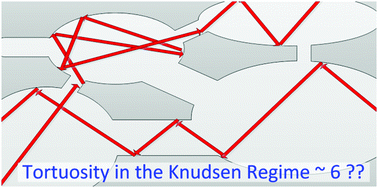The origin of a large apparent tortuosity factor for the Knudsen diffusion inside monoliths of a samaria–alumina aerogel catalyst: a diffusion NMR study†
Abstract
Pulsed field gradient (PFG) NMR was applied to measure tortuosity factors for carbon dioxide diffusion in the Knudsen and gas regimes inside monoliths of a samaria–alumina aerogel catalyst, a high porosity material containing micropores in addition to meso- and macropores. The apparent tortuosity factor obtained from PFG NMR measurements for the Knudsen diffusion in the meso- and macropores of the catalyst has an unexpectedly large value of approximately 6 if carbon dioxide adsorption in the micropores and other types of surface adsorption sites of the catalyst is ignored. At the same time, the corresponding apparent tortuosity factor in the gas regime was found to be around 2. Application of a proposed model which describes fast molecular exchange between the surface adsorption sites and the main pore volume of the catalyst yields corrected tortuosity factors which depend only on the pore system geometry. Using this model, the corrected tortuosity factors were found to be around 2 for both diffusion regimes, in agreement with the expectations based on a high porosity of the studied catalyst.


 Please wait while we load your content...
Please wait while we load your content...